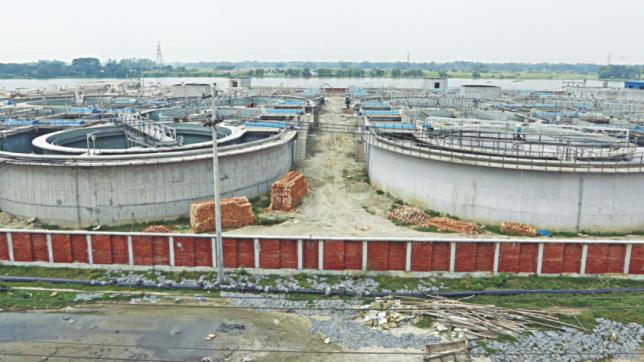Many Savar tanneries still not ready

Rawhide might face the same mismanagement as last year as many of the relocated tanneries at the industrial park in Savar are yet to resume operations.
Non-operation of tanneries at the Savar Tannery Industrial Estate (STIE), disruption in transportation of skins and high salt prices were the main reasons for the poor prices of rawhide last year.
So far, only 114 out of 155 tanneries could start operations on a partial level at the STIE, although the government had allocated the plots to the tanners a decade ago.
“Although more factories are in operation this year, we have the same problems as last year,” said Shakawat Ullah, general secretary of the Bangladesh Tanners Association (BTA).
The central effluent treatment plant (CEPT) at the STIE is yet to become fully operational and the repair works of the approach roads to the estate are still going on.
The approach roads in front of the STIE are not capable of taking the load of thousands of rawhide-laden trucks.
There is little possibility of completion of the renovation works ahead of Eid-ul-Azha, which is scheduled to be held August 22, Ullah said.
“We are trying to improve the road condition ahead of Eid for easy transportation of the goods,” said Moin Uddin Ahamed, deputy manager of the STIE.
This year, there is no shortage of salt though.
About 40 percent of the rawhide purchased last year has remained unsold until now as the demand for leather goods declined worldwide, said Md Shaheen Ahamed, chairman of the BTA, at a press conference at the commerce ministry last week.
The export of leather and leather goods fell last fiscal year for non-operation of all tanneries and environmental pollution in the nearby areas of the STIE, said Saiful Islam, president of the Leathergoods and Footwear Manufacturers and Exporters Association of Bangladesh.
Last fiscal year, leather and leather goods brought home $1.08 billion, down 12.03 percent year-on-year. The earnings were also 21.34 percent below the annual target of $1.38 billion.
“The demand for leather and leather goods will go up if we can improve environmental compliance,” Islam said. Leather and leather goods have been bringing in more than $1 billion for the last five years.
The prices of salt-mixed rawhides of cows and buffalos have been fixed at Tk 45 to Tk 50 per square foot in Dhaka and Tk 35 to Tk 40 for outside of the capital, Commerce Minister Tofail Ahmed told reporters after a meeting with tanners and traders at his secretariat office last week.
The Bangladesh Tariff Commission, however, recommended the government set the price between Tk 55 and Tk 60 per square foot.
The prices of salt-mixed castrated male goats, or wether, have been fixed at Tk 18-20 per square foot across the country and that of female goats, or does, is Tk 13 and Tk 15 per square foot.
This year, 1.16 crore animals could be sacrificed. Of them, 44.57 lakh would be cows and buffalos, according to the Department of Livestock. Some 71 lakh goats and sheep as well as 31,000 other animals such as camels and fat-tailed sheep could be slaughtered.
Last year, 1.4 crore animals were slaughtered, of which 45.29 lakh were cows and buffalos and 58.91 lakh were goats and sheep.
